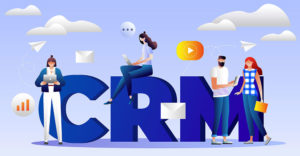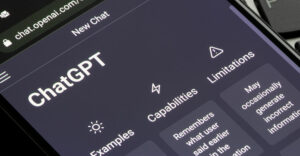
Let’s face it, SaaS is sexy these days. Nearly everybody is either starting entirely new companies to capitalize on the benefits of SaaS or madly rushing to get their applications ported to it.
At a recent conference, I presented at in the Bay Area, this became abundantly clear. Every session hosted by venture capitalists who talked about the exponential growth of SaaS was packed and sessions where CEOs of successful SaaS start-ups had standing-room only crowds.
All of this passion for SaaS would make anyone stop and wonder, “So, what does make a great SaaS startup?”
Top Take-Aways
From the presentations given and from the discussions with attendees and presenters, the following take-aways were gained:
- Passion for serving customers is more important than a passion for VC cash. This became abundantly clear when the founder and CEO of Brainshark, Joe Gustafson, spoke. He talked about best practices in starting a SaaS-based software company and had a great quote about turning customers into your best salespeople.
- Earning the annuity is more important than churning the sale. What was striking in many of the presentations given was the accentuating of underlying systems and processes necessary to scale the business versus just getting a kick-butt prototype out the door and sold.
VCs and successful CEOs both stressed the need to have pricing, automated services for both partners and customers, and service level agreements (SLA) that were real, not just promises of future performance from hosting providers. The message from VCs was that the app itself was secondary to making sure customers, once gained, would not be lost. Customer acquisition through exceptional execution of providing the app and service (if needed) was by far more critical.
- Myth of SaaS companies being exceptional Internet marketers was often questioned. Far from a criticism, a few of the CEOs remarked that it was much more difficult than they had anticipated to build any awareness at all for their companies online, and that when they did, lead generation was the toughest process of all.
Google AdWords is where the majority of the start-ups are spending their marketing dollars, with one estimating as high as 65 percent to 70 percent of total marketing spending going into AdWords campaigns. Search engine optimization (SEO) was successful to a point, yet many of these CEOs say that it takes a good year of constant effort to get known in their markets.
- Communicating with customers about downtime, maintenance schedules and new releases is critical. Several presenters talked about how they spent in inordinate amount of time and resources to make sure customers understood when services would be interrupted for maintenance in addition to the delivery schedule for new updates.
Part of best practices in running a SaaS start-up is making this a major focus. The approach Salesforce.com took with trust.salesforce.com was pointed out as a best practice at striving for transparency with customers regarding the status of systems globally. None of the companies presenting had gone to the trouble of setting up trust.mysaas.com, but it is no doubt in the works for many SaaS start-ups as this is an issue they continually face.
- Turning transactions into relationships. This CRM mantra gets its reality test in SaaS start-ups, as the need for getting away from a minimum lease to a long-term one is essential for a SaaS start-up to survive. What became apparent from the presentations, however, is that there is little price elasticity in SaaS services pricing; instead the expectation of apps being able to eventually supersede minimum expectations was far more prevalent.
The essence of this take-away was that despite SaaS being considered to be a low-cost option for enterprise apps, the expectations of added functionality over time were very high. Earning customers for the long term required a near-constant attention to how to fine-tune the application version currently active.
- Making usage reporting and analytics a strength. The fact that SaaS applications can be monitored in real time delivers exceptional insights and also trending of which products need more functionality to increase their use.
It became clear from the presentations that, despite how intuitive this is as a requirement from hosting providers, many of these services companies cannot provide real-time measurement of application usage. The SLAs mentioned earlier were critical in making real-time dashboards of application use become a reality for start-ups.
Continual Improvement
SaaS puts organizational strains on companies that are more acute than traditional software delivery models. The level of cross-functional coordination and project management required in a start-up to make SaaS work as a product strategy actually speeds up all processes, from engineering, to quality assurance, to marketing.
Every process that is related to a new release is sped up, with little time for doing tasks over again if not done well the first time. Once a commitment date for a new release is made, every department must figure out how to make their part of the launch work with everyone else’s contribution.
The day a new release goes live, there is no going back, as customers will begin using the new features of the most interest to them immediately. The stress, conflicts and need for coordination is so great that one start-up CEO remarked that in “dog years” his firm was 49, and in chronological years, seven.
What remains to be seen from the SaaS gold rush going on for VC funding today is what start-ups will be able to set a strong enough set of business processes and supporting systems in place, hiring the right talent who can survive in a sped-up product development and launch environment, and be financially focused to make sure contracts don’t attempt to gain customers on price alone. SaaS customers expect continual improvement of their apps at the same or lower prices; by meeting that expectation continually will these start-ups grow.
Louis Columbus, a CRM Buyer columnist, is a former senior analyst with AMR Research. He has worked with enterprise clients on defining solutions to their channel management, order management and service lifecycle management strategies. He also teaches graduate-level international business and marketing courses at Webster-Loyola Marymount University and University of California, Irvine. He is the author of fifteen books on technology and two books on analyst relations. His book, Getting Results from your Analyst Relations Strategies, can be downloaded for free.











































